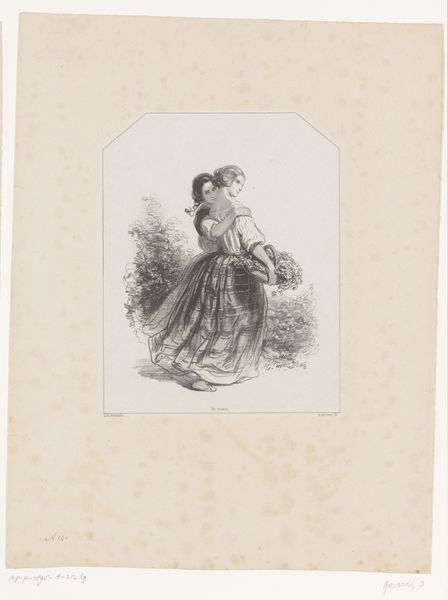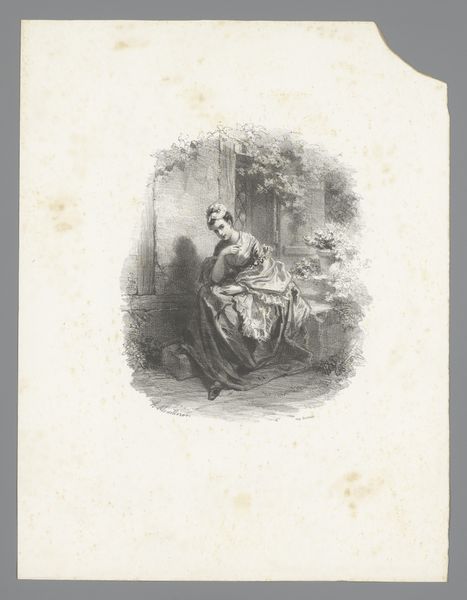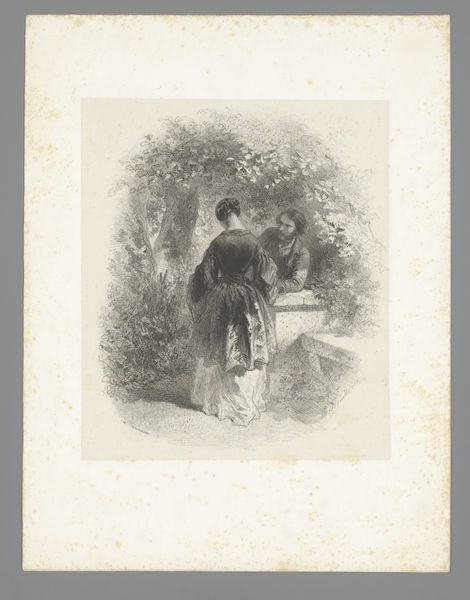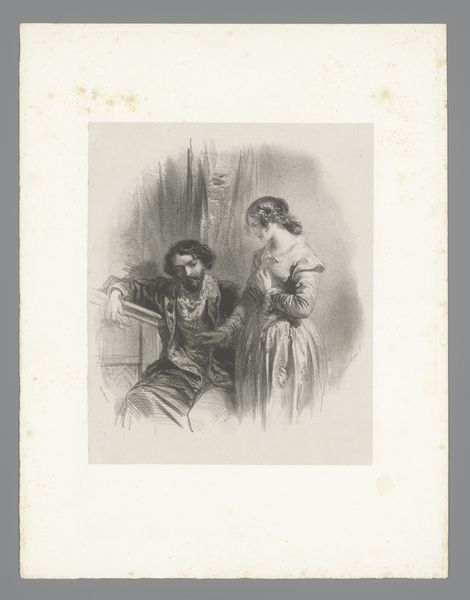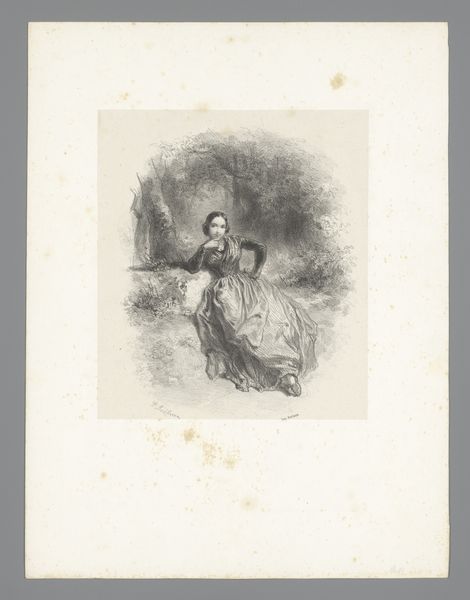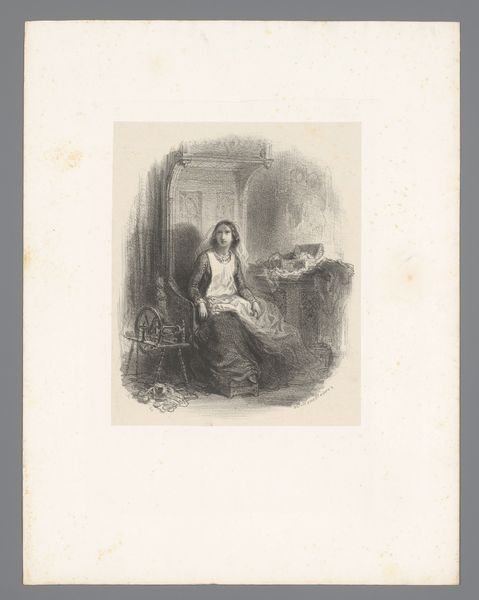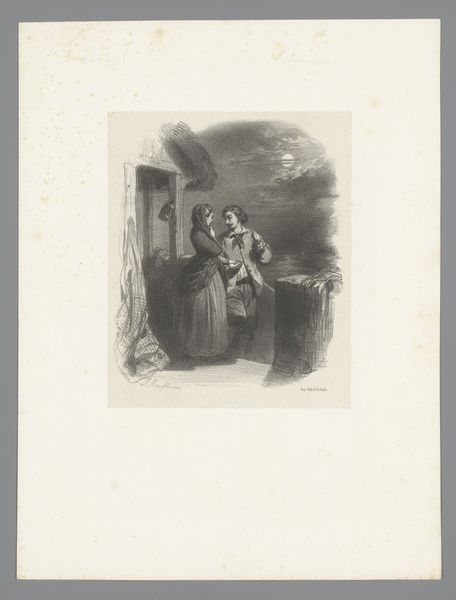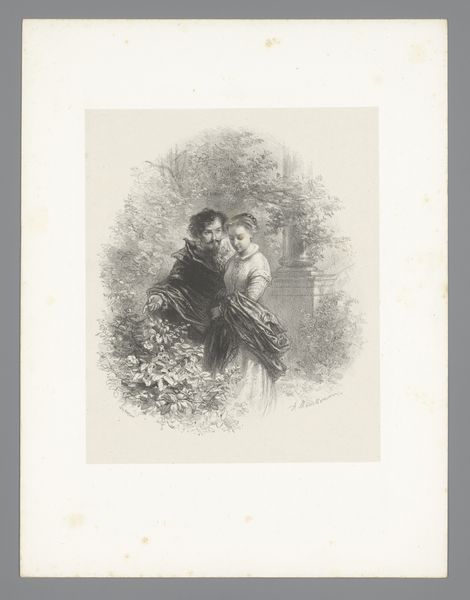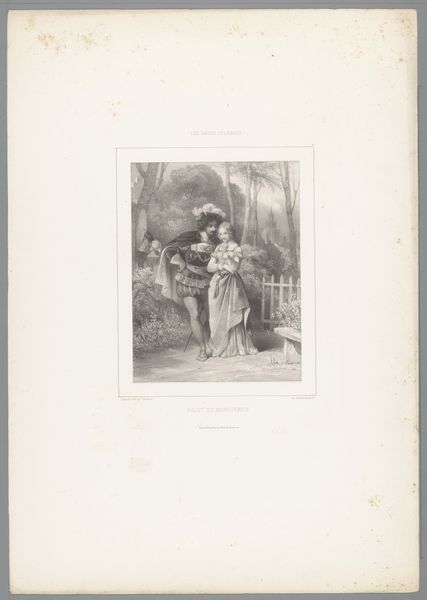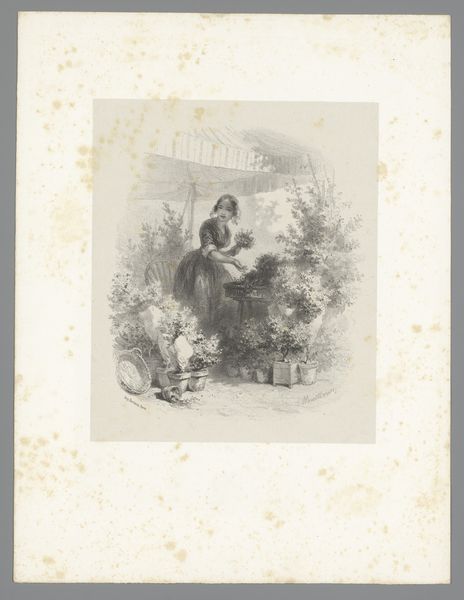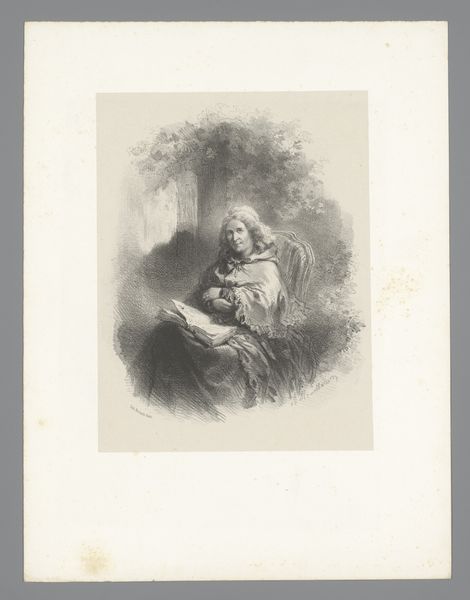
Vrouw zwaait met haar sjaal naar zeilschip op het water 1830 - 1881
0:00
0:00
Dimensions: height 356 mm, width 275 mm
Copyright: Rijks Museum: Open Domain
Curator: Here we have "Vrouw zwaait met haar sjaal naar zeilschip op het water", which translates to "Woman waving her scarf to a sailing ship on the water," an etching by Adolphe Mouilleron, made sometime between 1830 and 1881. It’s currently held at the Rijksmuseum. Editor: It’s a rather somber little piece, isn't it? All that monochrome drama. She's in mourning, maybe? Or longing? Curator: Perhaps. It is evocative of the Romantic period, so feelings run high. Look at her position in relation to the ship, nearly separated by architecture, she is separated from a seafaring life she might have desired due to gender norms and expectation in that era. Editor: Her billowing scarf creates a dramatic visual link to the ship—a fragile, airy connection across the divide. White scarves are traditional emblems of mourning, also. The wave itself becomes a kind of iconic expression here, embodying separation. Is it possible that she has an unconventional job, one she cannot wave from in public or have as the source of income that supports the home life? Is she, like her scarf, between two worlds, or even hiding it to survive? Curator: It could be. Or maybe her story goes even deeper when we account for Mouilleron himself; as a man, portraying a woman and controlling the narrative in that manner. It becomes important to examine how she is portrayed and understand why we have to look at her through the Male Gaze. Editor: It brings another angle to it: that she’s perhaps waving goodbye to what little independence is allotted her as he seeks greater power beyond the frame. Consider the enduring symbol of ships: promise, travel, escape, these all contrast with the domestic confinement we are projecting upon her here, the flowers as well as a stone wall as a secondary reminder that this world is all hers to live in. Curator: That interpretation provides layers to this simple picture. To think about who creates an image as a political act itself, framing how we understand its narrative... Editor: And hopefully prompts further contemplation of familiar themes when viewing pieces like this.
Comments
No comments
Be the first to comment and join the conversation on the ultimate creative platform.

